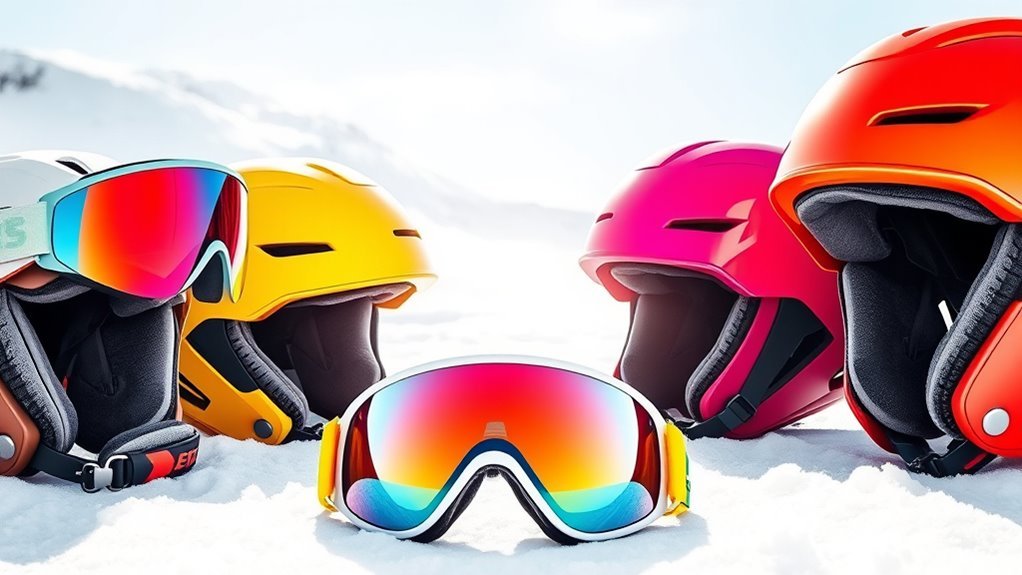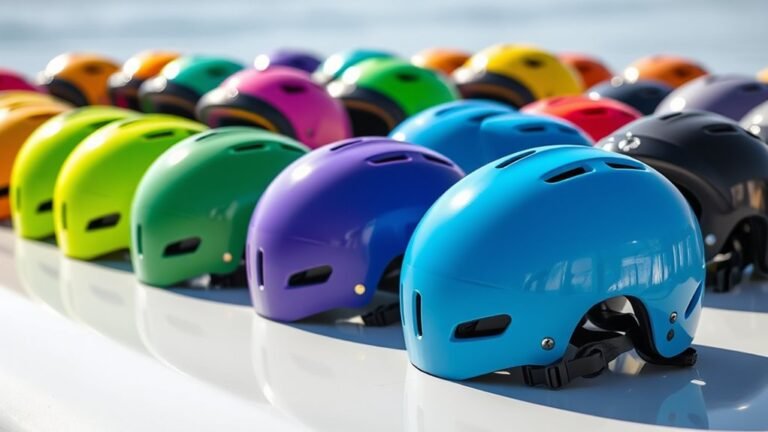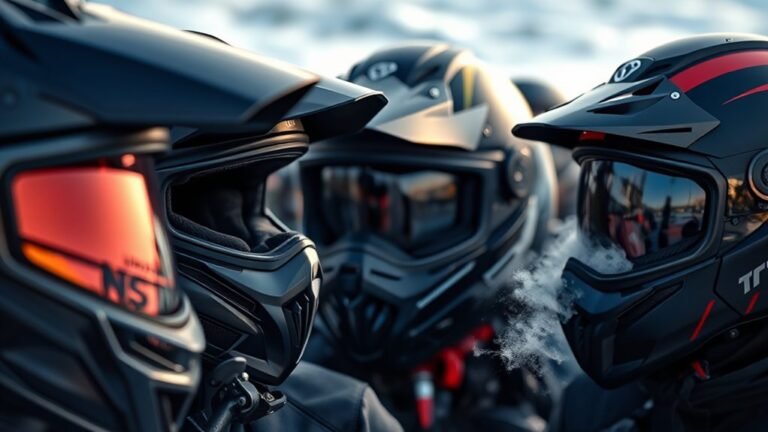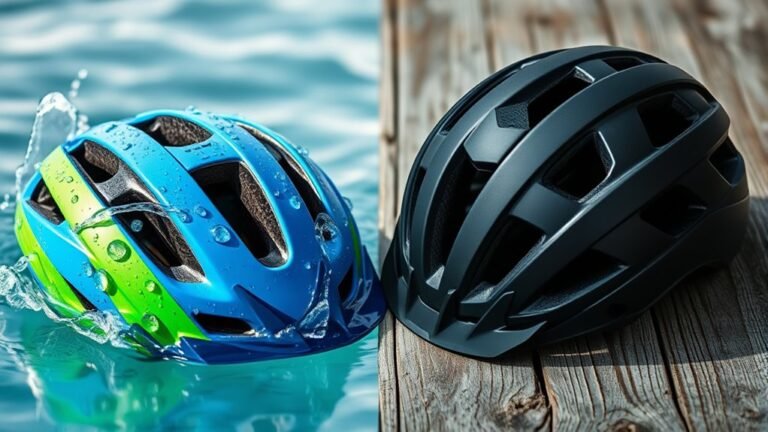Best Ski Helmets for Safety and Warmth
When choosing a ski helmet, focus on lightweight materials like polycarbonate, and look for adjustable ventilation systems to control warmth. The best helmets feature comfort padding and guarantee a snug fit for safety. Helmets such as Smith with MIPS technology or the Giro Range, known for its unique fit, stand out for protection and comfort. Understanding safety certifications like ASTM and CE can guide your selection. Discover more about top models and maintenance tips that enhance your skiing experience.
Top Features to Look for in a Ski Helmet
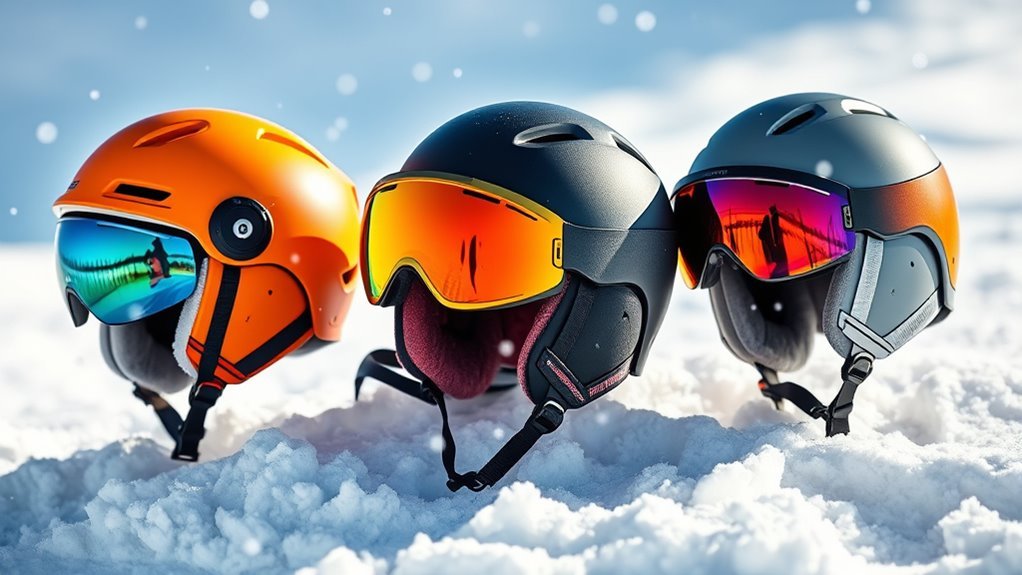
When you’re choosing a ski helmet, it’s essential to take into account several key features that can enhance both safety and comfort on the slopes. First, think about the helmet materials; lightweight polycarbonate or fiberglass shells can provide excellent protection without weighing you down. Next, consider ventilation systems. A good helmet should have adjustable vents to help regulate temperature, keeping you warm without overheating. Look for options that allow you to customize airflow based on your activity level. Additionally, padding is vital for comfort; moisture-wicking liners can help manage sweat while keeping your head cozy. By prioritizing these features, you’ll not only protect yourself but also enjoy the freedom of movement and focus on the thrill of skiing.
Review of the Best Ski Helmets on the Market
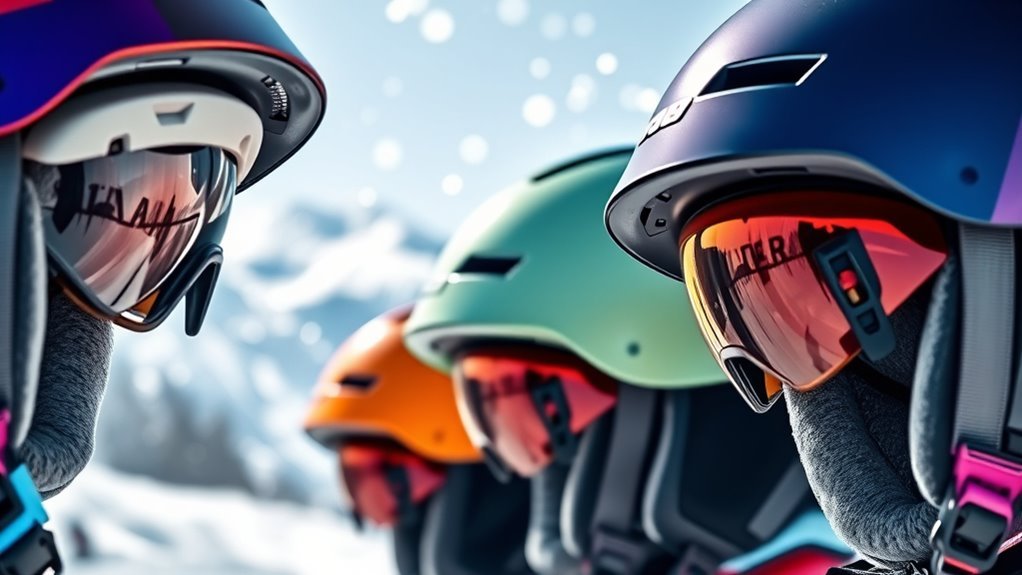
Choosing the right ski helmet can make all the difference in your experience on the slopes, and with so many options available, it’s essential to know which ones stand out. Brands like Smith, Giro, and POC have garnered rave reviews for their innovative helmet technology. For instance, Smith’s MIPS technology enhances safety by reducing rotational forces during impacts. Giro’s Range helmet boasts a unique fit system, ensuring comfort while keeping you warm. POC’s Obex SPIN helmet combines lightweight design with superior protection. Each of these ski helmet brands offers distinct features tailored to various skiing styles, providing you with the freedom to carve your path with confidence. Explore these options, and find the perfect balance of safety and warmth for your adventures.
How to Choose the Right Fit for Your Helmet
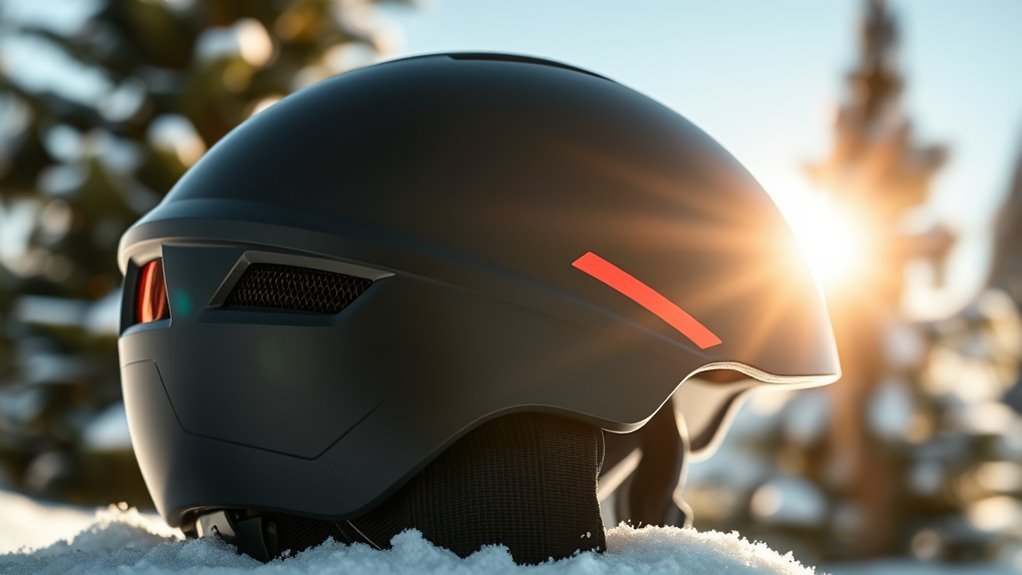
Finding the right fit for your ski helmet is essential not only for comfort but also for safety on the slopes. Start with accurate size measurement; use a flexible tape to measure the circumference of your head just above your eyebrows. Most brands provide a size chart, so compare your measurement to find your ideal size. When you try on a helmet, it should sit snugly without causing discomfort. Look for fit adjustment mechanisms like dial systems or adjustable straps that can customize the fit. Guarantee the helmet doesn’t shift when you move your head, and check that it covers your forehead adequately. A well-fitted helmet enhances your experience and gives you the freedom to ski confidently.
Safety Standards and Certifications Explained
While you might focus on style and comfort when selecting a ski helmet, understanding safety standards and certifications is just as essential. Helmets undergo rigorous testing to meet certification types like ASTM, CE, and Snell, each offering different safety ratings. Knowing these certifications helps you choose a helmet that protects you on the slopes.
| Certification Type | Testing Standard | Safety Rating |
|---|---|---|
| ASTM F2040 | Impact Resistance | Good |
| CE EN 1077 | Shock Absorption | Excellent |
| Snell RS-98 | Multi-Impact | Superior |
Tips for Maintaining Your Ski Helmet
A well-maintained ski helmet is your best ally for safety and performance on the slopes. To guarantee your helmet stays in top shape, follow these essential tips:
- Cleaning Techniques: Regularly wipe down the exterior with a damp cloth and mild soap. Avoid harsh chemicals that can degrade materials. For the interior, use a gentle fabric cleaner to eliminate odors.
- Inspect Regularly: Check for cracks or dents after each use. If you notice any damage, it’s time to replace your helmet.
- Storage Tips: Store your helmet in a cool, dry place away from direct sunlight. Use a protective bag to prevent scratches and impacts during transport.
Frequently Asked Questions
Can I Wear Glasses Under My Ski Helmet?
Yes, you can wear glasses under your ski helmet, but it’s important to verify proper glasses compatibility and helmet fit. Look for helmets designed with enough space to accommodate your eyewear comfortably. A snug fit is vital, so adjust your helmet to avoid any pressure on your glasses. Consider using prescription goggles as an alternative for a more seamless experience while skiing, allowing you the freedom to enjoy the slopes without hindrance.
How Often Should I Replace My Ski Helmet?
Imagine your helmet as a trusty steed, galloping through the mountains. Just like any loyal companion, it needs care and timely replacement. You should replace your ski helmet every 3 to 5 years, even if it seems fine. Safety standards evolve, and helmets can degrade over time, affecting their effectiveness. Regularly inspect for cracks or damage, as a worn-out helmet can’t protect you like it once did, compromising your freedom on the slopes.
Are Ski Helmets Suitable for Other Winter Sports?
Yes, ski helmets are quite versatile and can be suitable for other winter sports like snowboarding, sledding, and even ice skating. They’re designed to provide protection and warmth, making them a great choice for various activities in cold conditions. Just verify the fit is snug and comfortable for your specific sport. Keep in mind that while they’re effective, some sports might have specialized helmets that offer additional features tailored for those activities.
What Is the Best Way to Clean My Ski Helmet?
They say, “A clean helmet is a happy helmet.” To clean yours, start by removing any removable padding and wash it separately with mild soap and water. For the shell, use a soft cloth and a gentle cleaning product designed for plastics. Avoid harsh chemicals that could damage the materials. Don’t forget to check for any damage during your maintenance routine. Regular care guarantees your helmet stays in top shape for all your winter adventures!
Do I Need to Wear a Beanie Under My Helmet?
You don’t necessarily need to wear a beanie under your helmet, but it can offer some benefits. A beanie can provide extra warmth and comfort, especially on colder days. However, make sure your helmet fits properly; if it’s too tight with a beanie, it might reduce effectiveness in a fall. Consider lightweight, low-profile beanies that won’t compromise the helmet’s snug fit, allowing you to enjoy the slopes freely and safely.
